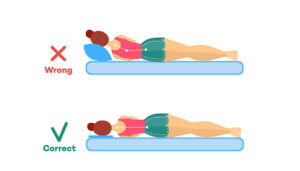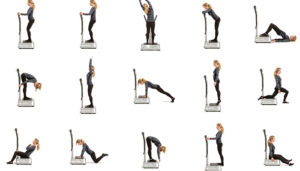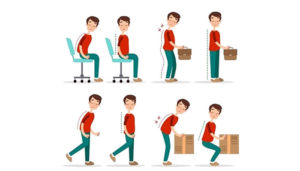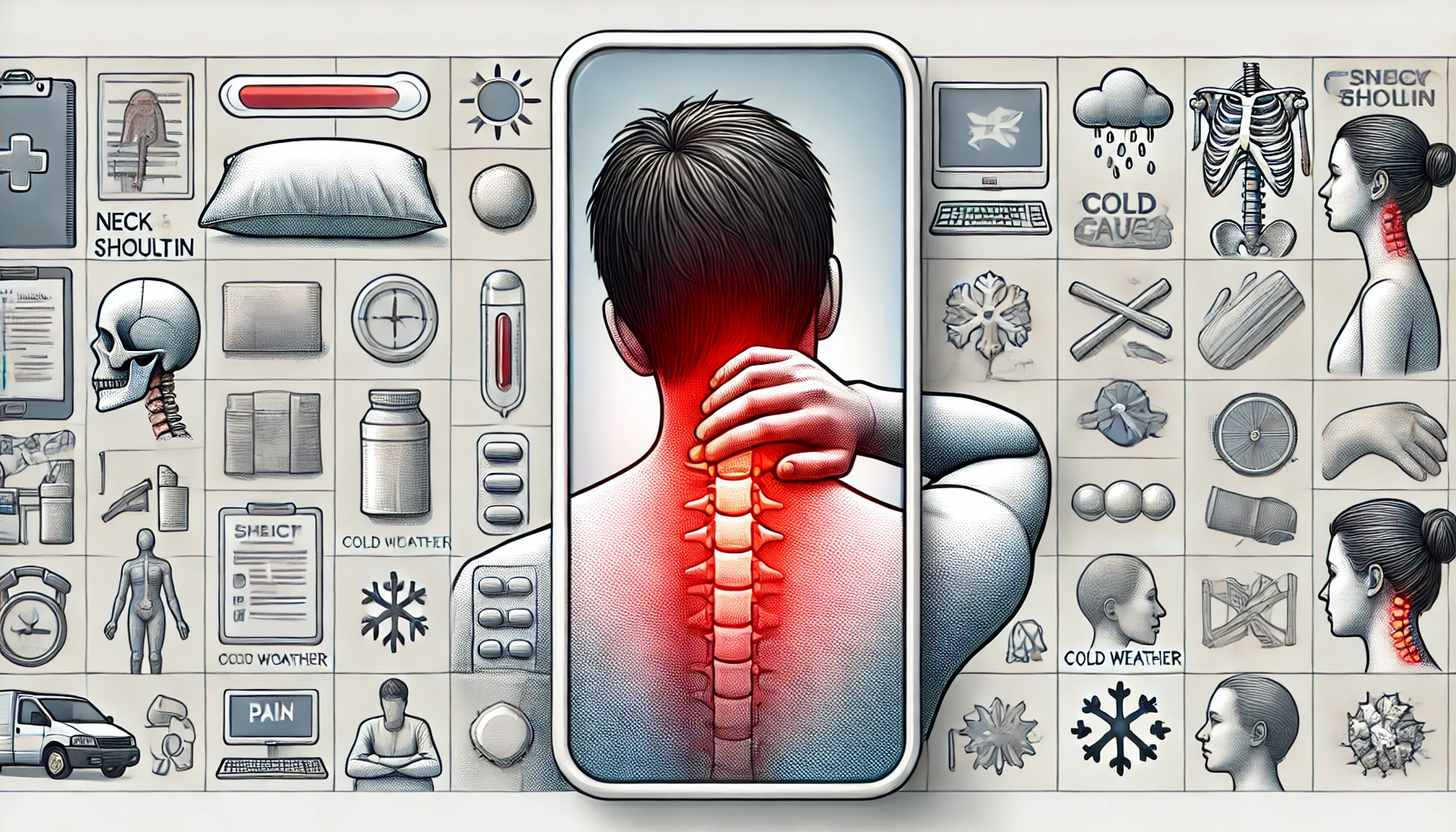Definition
Neck and shoulder pain is characterized by discomfort in the neck and shoulder area. It often results in restricted movement when turning the neck. This condition commonly appears after waking up. It is related to the musculoskeletal and nervous systems in the neck and shoulder region.
Several factors, including muscle strain, degeneration, and cervical disc herniation, commonly cause this type of pain. It often manifests after waking, sudden movements, or exposure to cold weather. The pain tends to worsen with neck movement, prolonged sitting, and weather changes, while it generally improves with rest.
Causes
Various factors can cause neck and shoulder pain, with the most common being:
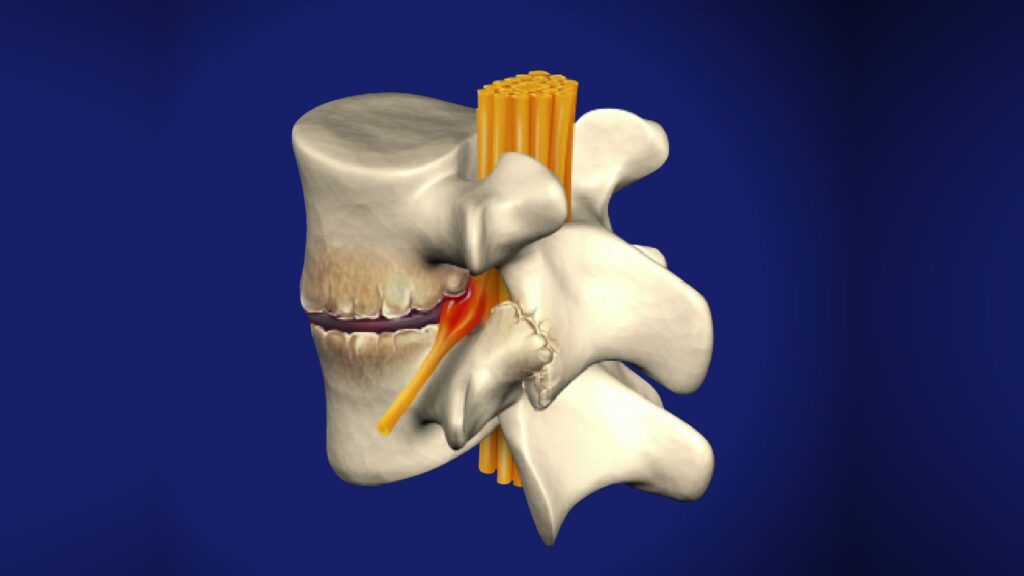
- Muscle strain: Poor posture over time due to habits such as frequently bending the neck, prolonged computer use, sleeping with the head too high or too low, etc., gradually stretching the neck and shoulder muscles, leading to pain. Sudden neck movements, such as twisting or turning the neck abruptly, can cause muscle spasms and pain, especially in cold weather or with direct exposure to air conditioning. Doctors usually find this condition to be benign, and it can often be completely cured without causing long-term effects.
- Cervical spondylosis: This condition is often closely related to the degeneration of the cervical vertebrae, causing persistent or severe pain during acute episodes.
- Cervical disc herniation: This condition often occurs acutely after a neck injury or sudden neck movement that displaces the disc. Depending on the degree of disc compression, the condition can range from mild to severe or even be an emergency.
- Cervical vertebrae slippage or misalignment usually progresses silently over a long period and often associates with degeneration.
Typical symptoms include pain and stiffness in the neck and shoulder area, which may progress silently over time with non-specific symptoms such as dull neck and shoulder ache and mild stiffness. The condition can gradually become uncomfortable or suddenly cause severe pain. Additional symptoms may include:
- Neck stiffness: Stiffness in one or both sides of the neck, limiting movement (bending, extending, tilting, rotating), or even making neck movement impossible due to pain.
- Muscle spasms that compress the vertebral arteries, which supply blood to the occipital area of the brain, often cause headaches, especially in the occipital region.
- Dizziness: Symptoms related to the vestibular and cerebellar balance.
- Numbness, paresthesia, and electric shock sensations in the neck and shoulder area: Numbness may radiate from the neck and shoulder down to the arms, suggesting nerve root compression in the neck and shoulder area.
Diagnosis
The doctor needs to exploit the medical history and specific and detailed symptoms such as the circumstances of onset, nature of pain, accompanying symptoms to get an accurate diagnosis. Doctors may recommend some paraclinical tests to make a more accurate diagnosis or to aid in treatment.
- Cervical spine X-ray: often recommended to evaluate the structure of the spine and related abnormalities.
- MRI/CT of the cervical spine: often recommended when X-ray cannot examine soft tissues, tendons, discs, nerves and spinal cord.
- Electromyography (EMG): Indicated to examine nerve fiber damage when there are symptoms of root compression.
- Blood test: Usually rarely prescribed, often used to diagnose and exclude inflammatory diseases, tumors, tuberculosis, … when necessary.
Treatment
Depending on the cause and severity of neck and shoulder pain, the doctor will prescribe appropriate treatment methods such as:
- Non-drug treatments:
Firstly, changing lifestyle and activities, as well as exercising the neck and shoulders properly, should be adjusted daily to prevent and limit the recurrence or worsening of neck and shoulder pain.
Additionally, traditional medicine acupressure methods can help relax muscles and effectively reduce pain.

Moreover, traditional medicine acupuncture is effective for both acute and chronic conditions, as it has been studied and proven to be beneficial.
Furthermore, physical therapy methods such as electrotherapy, ultrasound therapy, and spinal traction help to relieve pain, relax muscles, and reduce inflammation.
- Drug treatments:
Anti-inflammatory drugs (Ibuprofen, Naproxen…), pain relievers (Paracetamol), muscle relaxants (Eperisone), nerve pain relievers (Gabapentin), anti-inflammatory corticosteroids (Methyl Prenisolone) can be considered for each appropriate condition and to avoid unwanted side effects of the drug.
Pain-relieving injections: only used when the pain is severe, usually anti-inflammatory drugs (Meloxicam), anti-inflammatory corticosteroids (Prednisolone),
- Surgery (usually applied to cases related to nerve roots or spinal cord).
Prevention
We can completely prevent neck and shoulder pain from our daily lifestyle and activities through some useful methods as follows:
- Adjust your lifestyle and activities: limit bad postures such as constantly bending your neck (using phones, computers for a long time, etc.), limit sudden movements (breaking your neck, suddenly turning your neck), carrying heavy objects, avoid sleeping on your side, using pillows that are too high, etc.
- Exercise: increase flexibility and nutrient circulation for the whole body
- Appropriate exercise: exercises such as bending, leaning, tilting, and rotating within the range of motion, especially for office workers, etc.
- Rest and relax properly to avoid stress
